 Just in from St. Paul, the 3-judge panel in MN's U.S. Senate Election Contest have returned to issue a ruling...
Just in from St. Paul, the 3-judge panel in MN's U.S. Senate Election Contest have returned to issue a ruling...
The ballots appear to include some that Franken had identified as wrongly rejected as well as ballots that Coleman wanted opened in his quest to overcome a 225-vote lead that Franken gained after a recount.
• The court's ruling is posted in full here [PDF]
Al Franken's attorney Marc Elias says: "We are pleased...Obviously, the math is going to be very difficult for former Sen. Coleman and his lawyers at this point."
Former Sen. Norm Coleman's attorney Ben Ginsberg admits: "It is pretty much of a longshot with that few ballots being put in play...We are disappointed. But we feel the court is wrong and we will appeal." During a teleconference this afternoon he strongly hinted they plan to appeal all the way to the U.S. Supreme Court, if necessary.
Earlier this week, Republican Sen. John Cornyn, chair of the Republican Senatorial Campaign Committee (RSCC) threatened "WWIII" if the Democrats seat Franken before they appeal the case to the U.S. Supreme Court, if necessary, and even if those appeals take "years."
After reviewing evidence for some 980 previously rejected absentee ballots, as submitted for consideration by both candidates, the judges found that just 400 of them met likely grounds for being opened, counted and added to the final results, though only once they are able to review the actual ballots themselves will they know for certain. They rejected Coleman's plea to use lenient standards for determining which ballots should be counted, holding instead to the strict rule of law, and allowing ballots only for possible counting if they were clearly, legally cast, according to very specific state parameters.
The judges review, they took pains to point out, was exceedingly thorough...
"Upon the Court's initial review, it became apparent that the parties' spreadsheets identifying the relevant exhibits were inadequate and unreliable. This required the Court to complete an exhaustive review of all the records and documents submitted by either party throughout the course of the entire trial."
The court thus reviewed:
"...19,181 pages of filings, including pleadings, motions and legal memoranda from the parties; 1,717 individual exhibits admitted into evidence; and testimony from 142 witness examinations, including election officials from 38 Minnesota counties and cities and 69 voters who appeared and testified in defense of their ballots. The trial evidence comprised exhibits offered in three-ring binders that, when stacked, equaled over 21 feet of paper copies."
Don't think they're just complaining about the length --- not that anybody would blame them. The court is clearly establishing the level of diligence they went to in order to decide the questions at hand --- thus guarding themselves against any appeal on procedural grounds.
In reviewing the ballots, the 3-judge panel determined that each one must be individually proven as fully legal before it can be counted, noting: "The Court gave both parties every opportunity to meet this burden. The court did not impose time limits on the length of the election contest nor did it limit either party's opportunity to call witnesses or introduce evidence."
The review of the ballots for possible counting will begin April 7th. After that, the losing candidate will have 10 days to appeal to the MN Supreme Court if he wishes.
The court noted that, at the start of the contest, Coleman “argued that close to 5,000 absentee ballots should be opened and counted.” Coleman’s claim was voluntarily reduced following prior court rulings requiring “individualized evidence” that each ballot was lawfully cast. By the close of trial Coleman identified 1,360 unopened absentee ballots he contended were lawfully cast. Franken identified 430.
The order does not specify how many of the 400 ballots to be opened and counted came from Franken’s list and how many came from Coleman’s. However, referring to Coleman’s 1,300, the court stated: “This number, however, was contingent upon the court making certain presumptions regarding whether an absentee ballot was cast.” The court proceeded to reject those presumptions, reiterating the individualized standards required before an absentee ballot can be ordered open and counted, to wit: a) that the voter was registered; b) that the individual who cast the absentee ballot did not otherwise vote; c) that the voter submitted an absentee ballot application; d) that the voter completed and signed the absentee ballot envelope; e) that the voter’s absentee ballot was witnessed by a registered MN voter or notary. Since individualized evidence came primarily from the Franken legal team, it seems doubtful that more than a handful of the 400 were reviewed at Coleman’s request.
While the order does not make an express reference to still pending motions, there appears to be little room for doubting that the court did not buy Coleman’s arguments that the court should go back and re-examine all of the absentee ballots previously counted. Indeed, the court stressed that the “recount process was transparent and open to the public.”
The court’s task is to determine which candidate received the most lawfully cast votes. That task will likely be completed on April 7th.
Ernest A. Canning also contributed to this report


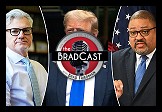 Former Federal Prosecutor: Trump Must Be Sentenced in NY Before Taking Office Again: 'BradCast' 11/20/24
Former Federal Prosecutor: Trump Must Be Sentenced in NY Before Taking Office Again: 'BradCast' 11/20/24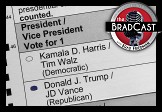 'Bullet Ballot' Claims, Other Arguments for Hand-Counting 2024 Battleground Votes: 'BradCast' 11/19/24
'Bullet Ballot' Claims, Other Arguments for Hand-Counting 2024 Battleground Votes: 'BradCast' 11/19/24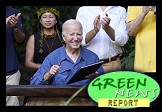 'Green News Report' 11/19/24
'Green News Report' 11/19/24
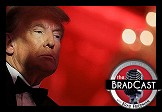 Trump Already Violating Law (He Signed!) During Transition: 'BradCast' 11/18/24
Trump Already Violating Law (He Signed!) During Transition: 'BradCast' 11/18/24 Sunday 'Into the Gaetz of Hell' Toons
Sunday 'Into the Gaetz of Hell' Toons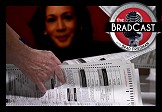 Computer Security Experts Ask Harris to Seek Hand-Counts Due to Voting System Breaches: 'BradCast' 11/14/24
Computer Security Experts Ask Harris to Seek Hand-Counts Due to Voting System Breaches: 'BradCast' 11/14/24  'Green News Report' 11/14/24
'Green News Report' 11/14/24 Trump Criminal Cases Fade After Election as GOP 'Does Not Believe in Rule of Law': 'BradCast' 11/13/24
Trump Criminal Cases Fade After Election as GOP 'Does Not Believe in Rule of Law': 'BradCast' 11/13/24 Climate Advocates Brace for Fight With Trump 2.0: 'BradCast' 11/12/24
Climate Advocates Brace for Fight With Trump 2.0: 'BradCast' 11/12/24 'Green News Report' 11/12/24
'Green News Report' 11/12/24 Let It All Out: 'BradCast' 11/11/24
Let It All Out: 'BradCast' 11/11/24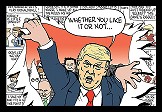 Sunday 'Like it or Not' Toons
Sunday 'Like it or Not' Toons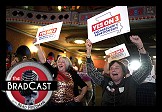 Not All Bad: Abortion Rights Won Big (Almost) Everywhere: 'BradCast' 11/7/24
Not All Bad: Abortion Rights Won Big (Almost) Everywhere: 'BradCast' 11/7/24 'Green News Report' 11/7/24
'Green News Report' 11/7/24 U.S. CHOOSES CONVICTED CRIMINAL, ADJUDICATED RAPIST: 'BradCast' 11/6/24
U.S. CHOOSES CONVICTED CRIMINAL, ADJUDICATED RAPIST: 'BradCast' 11/6/24 ELECTION DAY 2024: Tea Leaves, Probs for Voters, What's Next: 'BradCast' 11/5/24
ELECTION DAY 2024: Tea Leaves, Probs for Voters, What's Next: 'BradCast' 11/5/24 'Closing Arguments' for Undecideds, Third-Party Voters: 'BradCast' 11/4/24
'Closing Arguments' for Undecideds, Third-Party Voters: 'BradCast' 11/4/24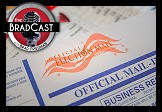 The GOP 'Voter Fraud' Before the Storm: 'BradCast' 10/31/24
The GOP 'Voter Fraud' Before the Storm: 'BradCast' 10/31/24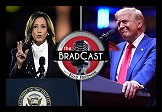 'Closing Arguments'with Digby and Driftglass: 'BradCast' 10/30/24
'Closing Arguments'with Digby and Driftglass: 'BradCast' 10/30/24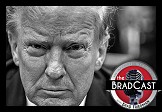 Trump Promises to be a Lawless, Authoritarian President. Believe Him: 'BradCast' 10/29/24
Trump Promises to be a Lawless, Authoritarian President. Believe Him: 'BradCast' 10/29/24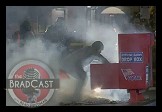 Ballots Burn, Billion-aires 'Obey in Advance', Callers Ring In: 'BradCast' 10/28/24
Ballots Burn, Billion-aires 'Obey in Advance', Callers Ring In: 'BradCast' 10/28/24 Musk's Privatized Internet Satellite System Threatens U.S. National Security
Musk's Privatized Internet Satellite System Threatens U.S. National Security
 VA GOP VOTER REG FRAUDSTER OFF HOOK
VA GOP VOTER REG FRAUDSTER OFF HOOK Criminal GOP Voter Registration Fraud Probe Expanding in VA
Criminal GOP Voter Registration Fraud Probe Expanding in VA DOJ PROBE SOUGHT AFTER VA ARREST
DOJ PROBE SOUGHT AFTER VA ARREST Arrest in VA: GOP Voter Reg Scandal Widens
Arrest in VA: GOP Voter Reg Scandal Widens ALL TOGETHER: ROVE, SPROUL, KOCHS, RNC
ALL TOGETHER: ROVE, SPROUL, KOCHS, RNC LATimes: RNC's 'Fired' Sproul Working for Repubs in 'as Many as 30 States'
LATimes: RNC's 'Fired' Sproul Working for Repubs in 'as Many as 30 States' 'Fired' Sproul Group 'Cloned', Still Working for Republicans in At Least 10 States
'Fired' Sproul Group 'Cloned', Still Working for Republicans in At Least 10 States FINALLY: FOX ON GOP REG FRAUD SCANDAL
FINALLY: FOX ON GOP REG FRAUD SCANDAL COLORADO FOLLOWS FLORIDA WITH GOP CRIMINAL INVESTIGATION
COLORADO FOLLOWS FLORIDA WITH GOP CRIMINAL INVESTIGATION CRIMINAL PROBE LAUNCHED INTO GOP VOTER REGISTRATION FRAUD SCANDAL IN FL
CRIMINAL PROBE LAUNCHED INTO GOP VOTER REGISTRATION FRAUD SCANDAL IN FL Brad Breaks PA Photo ID & GOP Registration Fraud Scandal News on Hartmann TV
Brad Breaks PA Photo ID & GOP Registration Fraud Scandal News on Hartmann TV  CAUGHT ON TAPE: COORDINATED NATIONWIDE GOP VOTER REG SCAM
CAUGHT ON TAPE: COORDINATED NATIONWIDE GOP VOTER REG SCAM CRIMINAL ELECTION FRAUD COMPLAINT FILED AGAINST GOP 'FRAUD' FIRM
CRIMINAL ELECTION FRAUD COMPLAINT FILED AGAINST GOP 'FRAUD' FIRM RICK SCOTT GETS ROLLED IN GOP REGISTRATION FRAUD SCANDAL
RICK SCOTT GETS ROLLED IN GOP REGISTRATION FRAUD SCANDAL VIDEO: Brad Breaks GOP Reg Fraud Scandal on Hartmann TV
VIDEO: Brad Breaks GOP Reg Fraud Scandal on Hartmann TV RNC FIRES NATIONAL VOTER REGISTRATION FIRM FOR FRAUD
RNC FIRES NATIONAL VOTER REGISTRATION FIRM FOR FRAUD EXCLUSIVE: Intvw w/ FL Official Who First Discovered GOP Reg Fraud
EXCLUSIVE: Intvw w/ FL Official Who First Discovered GOP Reg Fraud GOP REGISTRATION FRAUD FOUND IN FL
GOP REGISTRATION FRAUD FOUND IN FL


































